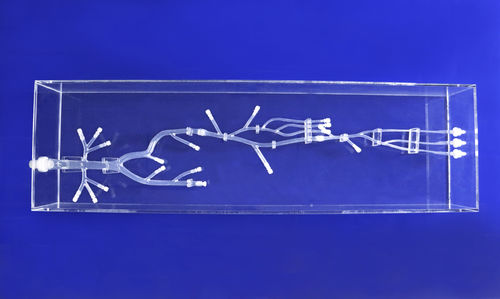
#Industry News
Lower Limb Ischemic Disease: Understanding Symptoms, Causes, and Treatment
Lower Extremity Artery II
Introduction:
Lower limb ischemic disease, also known as peripheral arterial disease (PAD), is a condition characterized by inadequate blood flow to the lower extremities. It occurs when the arteries that supply blood to the legs and feet become narrow or blocked, leading to reduced blood flow and oxygen delivery to the tissues. This article aims to provide an overview of lower limb ischemic disease, including its symptoms, causes, and available treatment options.
Symptoms and Diagnosis:
The most common symptom of lower limb ischemic disease is intermittent claudication, which manifests as leg pain or cramping during physical activity. Patients may also experience numbness, tingling, weakness, or a feeling of coldness in the legs or feet. In severe cases, non-healing wounds or ulcers may develop. Diagnosis is usually done through a combination of medical history evaluation, physical examination, ankle-brachial index (ABI) measurement, and imaging tests such as Doppler ultrasound or angiography.
Causes and Risk Factors:
Lower limb ischemic disease is primarily caused by atherosclerosis, a condition characterized by the buildup of plaque in the arteries. Contributing factors include smoking, high blood pressure, high cholesterol levels, diabetes, obesity, and a sedentary lifestyle. Additionally, age, family history of PAD, and certain medical conditions like kidney disease or autoimmune disorders can increase the risk of developing the disease.
Treatment Options:
The management of lower limb ischemic disease aims to relieve symptoms, improve vascular function, and prevent disease progression. Lifestyle changes, such as smoking cessation, adopting a healthy diet, regular exercise, and weight management, are crucial. Medications to control risk factors, such as antiplatelet agents, cholesterol-lowering drugs, and blood pressure medications, may be prescribed. In more severe cases, minimally invasive procedures like angioplasty or stenting may be performed to improve blood flow. Surgical options, such as bypass grafting, may be considered for complex or advanced cases.
Prevention and Outlook:
Preventive measures play a significant role in lower limb ischemic disease. Managing risk factors, maintaining a healthy lifestyle, and regular check-ups are essential. Early detection and intervention can significantly improve outcomes and reduce the risk of complications, such as tissue damage, non-healing ulcers, or even limb amputation. With proper management and adherence to treatment plans, many individuals with lower limb ischemic disease can lead active and fulfilling lives.
Conclusion:
Lower limb ischemic disease is a common condition characterized by reduced blood flow to the legs and feet. Understanding the symptoms, risk factors, and available treatment options is crucial for early detection and effective management. By adopting a comprehensive approach that includes lifestyle modifications, medication management, and, if necessary, interventional procedures, individuals with lower limb ischemic disease can experience improved quality of life and minimize the risk of complications. Regular communication and close collaboration with healthcare professionals are essential to develop personalized treatment plans and achieve optimal outcomes.





